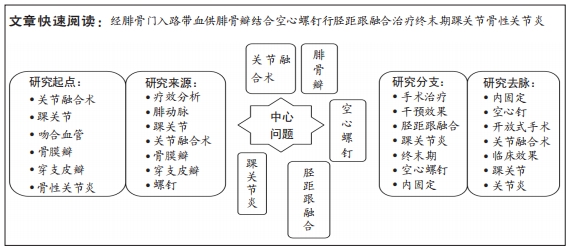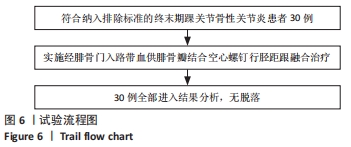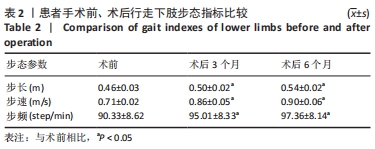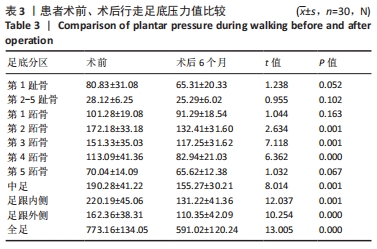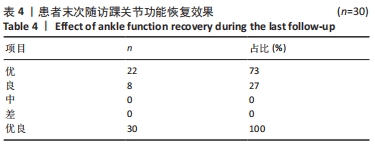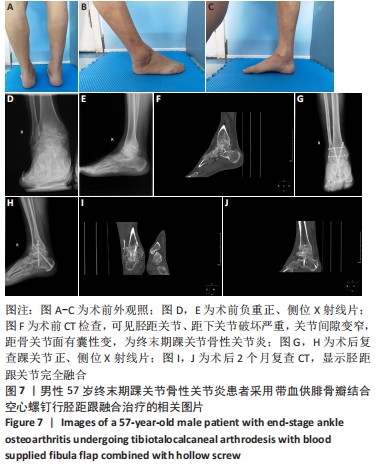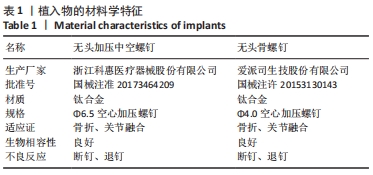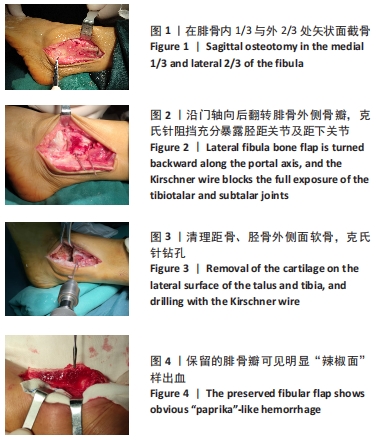[1] 高鹏,李晔,范彧,等.一期双侧胫距跟融合术治疗血友病性踝关节病的临床研究[J].中华骨与关节外科杂志,2018,11(5):370-374.
[2] 李琦,尚林,贾光辉,等.经腓骨外侧入路Philos钢板结合空心螺钉行胫距关节融合术对严重踝关节炎的疗效[J].河南医学研究, 2021,30(11):1980-1983.
[3] MENDICINO SS, KREPLICK AL, WALTERS JL. Open ankle arthrodesis. Clin Podiatr Med Surg. 2017;34(4):489-502.
[4] FRANCESCHI F, FRANCESCHETTI E, TORRE G, et al. Tibiotalocalcaneal arthrodesis using an intramedullary nail:a systematic review. Knee Surg Sports Traumatol Arthrosc. 2016;24(4):1316-1325.
[5] MONACO S J, LOWERY N, CRIM B. Fibular Strut Graft for Revisional Tibiotalocalcaneal Arthrodesis. Foot Ankle Specialist. 2016;9(6):560-562.
[6] 杨佳林,杜瑞,赵永杰,等.改良踝关节融合术治疗终末期踝关节骨性关节炎的疗效[J].临床骨科杂志,2020,23(6):884-887.
[7] 曲文庆,王振海,张俊勇,等.经外侧入路踝关节融合术治疗老年晚期踝关节炎33例的疗效分析[J].足踝外科电子杂志,2016,3(2): 1-7.
[8] 曲文庆,王振海,张俊勇,等.经外踝截骨螺钉固定的踝关节融合术治疗老年晚期踝关节炎[J].中华医学杂志,2017,97(9):679-683.
[9] 蒋协远,王大伟.骨科临床疗效评价标准[M].北京:人民卫生出版社,2005:123-232.
[10] 冯骏,俞光荣. 髓内钉胫-距-跟融合术并发症的研究进展[J]. 中国修复重建外科杂志,2015,29(9):1173-1176.
[11] SHAH AB,JONES C,ELATTAR O,et al. Tibiotalocalcaneal Arthrodesis With Intramedullary Fibular Strut Graft With Adjuvant Hardware Fixation. J Foot Ankle Surg. 2017;56(3):692-696.
[12] TAYLOR J,LUCAS DE,RILEY A,et al. Tibiotalocalcaneal Arthrodesis Nails:A Comparison of Nails With and Without Internal Compression. Foot Ankle Int. 2016;37(3):294-299.
[13] ARNO F,ROMAN F. The influence of footwear on functional outcome after total ankle replacement,ankle arthrodesis,and tibiotalocalcaneal arthrodesis. Clin Biomech (Bristol,Avon). 2016;32:34-39.
[14] 王满宜.功能性足踝重建外科[M].北京:人民卫生出版社,2006: 383-384.
[15] 李远辉,杨运发,胡汉生,等.带血管腓骨移植修复四肢大段骨缺损:可有效促进骨愈合[J].中国组织工程研究,2015,19(11):1641-1646.
[16] 尚林,王翔宇,王爱国,等.经腓骨入路倒置肱骨近端锁定接骨板结合空心螺钉行踝关节融合术治疗终末期踝关节炎[J].中华创伤骨科杂志,2020,22(7):592-597.
[17] 白绍元,喻喜爱.带血管蒂腓骨移植修复下肢长段骨缺损的长期随访观察[J].解剖与临床,2010,15(3):192-194
[18] 邹运璇,张宏宁,沈国栋,等.外踝截骨与关节镜下踝关节融合的疗效观察[J].中国矫形外科杂志,2020,28(11):913-917.
[19] 余国荣,喻爱喜,谭金海,等.带血供腓骨下段骨瓣移位融合踝关节的解剖与临床[J].医学新知杂志,2009,19(5):261-263.
[20] 谢志平,庄跃宏,郑和平,等.腓血管蒂腓骨嵌合组织瓣设计的解剖学基础[J].中国临床解剖学杂志,2014,32(3):259-263.
[21] 芦浩,袁玉松,徐海林,等. 经腓骨外侧入路行胫距跟关节融合术治疗胫距关节和距下关节病变[J].中华骨科杂志,2019,39(9):567-571.
[22] AJIS A, TAN KJ, MYERSON MS. Ankle arthrodesis vs TTC arthrodesis: patient outcomes, satisfaction, and return to activity. Foot Ankle Int. 2013;34(5): 657-665.
[23] 郁耀平,俞光荣.胫距跟关节融合术的研究进展[J].外科研究与新技术,2013,2(1):59-61.
[24] CHANG CB, JEONG JH, CHANG MJ, et al. Concomitant ankle osteoarthritis is related to increased ankle pain and a worse clinical outcome following total knee arthro-plasty. J Bone Joint Surg Am. 2018;100(9):735-741.
[25] BEEKHUIZEN SR, VOSKUIJL T, ONSTENK R, et al. Long term results of hemiarthroplasty compared with arthrodesis for osteoarthritis of the first metatarsophalangeal joint. J Foot Ankle Surg. 2018;57(3):445-450.
[26] 鹿军,温晓东,梁晓军,等.后正中经跟腱入路结合锁定接骨板行胫距跟关节融合术的临床应用[J].中华骨与关节外科杂志,2018, 11(8):574-577.
[27] 梁景棋,梁晓军, 张言,等.牵开成形术治疗踝关节骨性关节炎[J].中国矫形外科杂志,2018,26(19):1746-1751.
[28] 黄萍,钱念东,齐进,等.膝骨关节炎患者膝关节置换术后足底压力研究[J].中国运动医学杂志,2018,37(3):197-201.
[29] 吴本文,黄国锋,丁真奇. 踝及后足关节融合术应用进展[J]. 中国修复重建外科杂志,2016,30(4):514-517.
[30] 武勇,孙宁,李莹,等. 机器人辅助下胫距跟关节融合术治疗踝关节、距下关节骨关节炎一例报告[J].中华骨科杂志,2018,38(12): 760-762.
[31] 夏正东.经前路植骨交叉空心加压螺钉内固定在胫距关节融合术中的应用[J]. 中国现代医药杂志,2012,14(7):81-83.
[32] 周文正,李祖涛,蔡昱,等.锁定型后足融合髓内钉行踝关节融合术治疗终末期踝关节病变的疗效分析[J].中国骨与关节损伤杂志, 2019,34(12):1327-1329.
[33] 于鹤,宋秀锋,郑加法,等.应用腓骨瓣支撑辅助结合空心螺钉行胫距跟融合术疗效观察[J]. 足踝外科电子杂志,2018,5(1):19-22.
[34] 杨洁,倪朝民.足底压力及其临床康复应用研究进展[J].中国临床保健杂志,2014,17(3):329-331.
|
